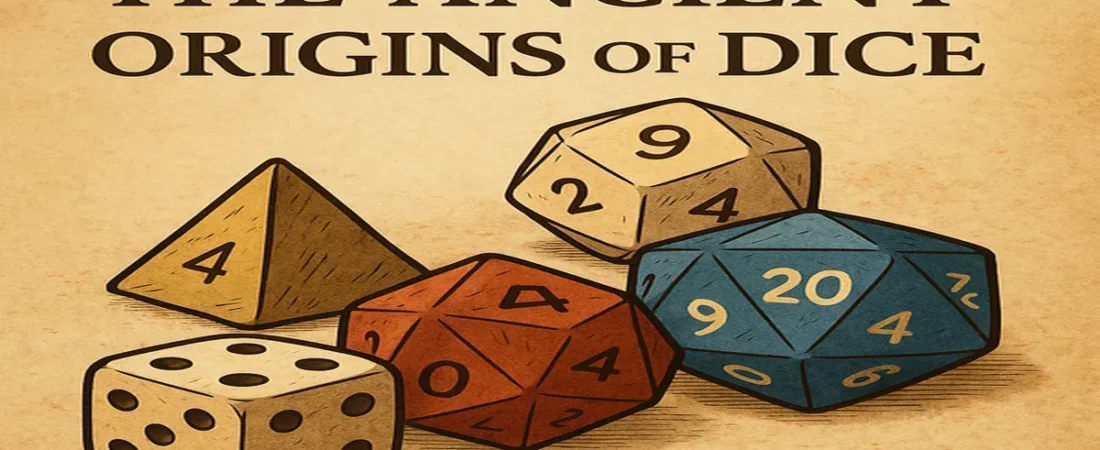Dice have a long and fascinating background. In this article, we’ll explore the history of dice, from prehistoric artifacts to modern gaming. . Those small, often colorful, polyhedral objects are more than just tools for games; they’re a tangible link to our past. As humanity’s original random number generators, dice have been used for millennia, long before the advent of video games or even the formalization of mathematics. Today, they remain a cornerstone of tabletop role-playing games (TTRPGs) like Dungeons & Dragons, shaping narratives and determining fates with every roll. Archaeological finds reveal that dice artifacts date back as far as 5,000 BC, underscoring their enduring presence in human culture.
This article explores the fascinating history of dice, tracing their evolution from misshapen animal bones to the precisely engineered polyhedrals we use today. We’ll explore their ancient origins, their role in divination and early gaming, and their eventual adoption by the modern gaming community, particularly within the world of D&D. Whether you’re a seasoned tabletop gamer, a history enthusiast, or simply curious about the origins of chance, this journey through the history of dice promises to be an insightful and engaging roll of the dice.
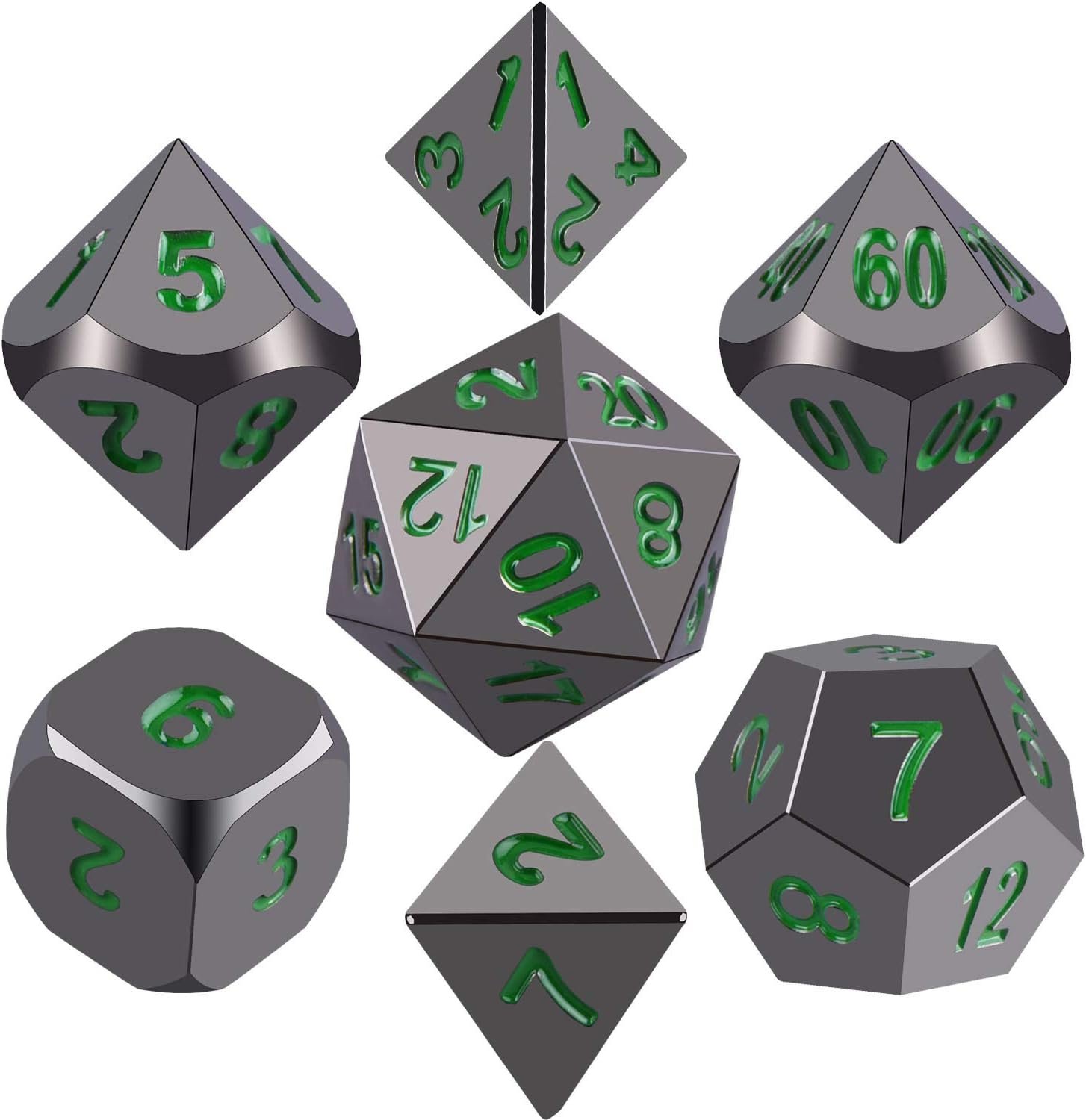
Standard 7-Die Polyhedral Dice Set
Buy on AmazonThe Prehistoric History of Dice Gaming
The history of dice begins not with perfect cubes or precisely angled polyhedrals, but with the raw materials readily available to early humans: animal bones and rudimentary carvings.
Ancient Bone Dice: The First Gaming Tools
In 2022, a remarkable discovery in the caves beneath the ancient city of Marisha, Israel, unearthed a massive collection of bone dice known as astragali. These weren’t just simple gaming pieces; some were inscribed with words like “stop” or “you are burnt,” suggesting their use in early forms of gambling or competitive games. Others bore the names of gods and goddesses associated with love and sex, such as Aphrodite and Eros, indicating their role in seeking divine favor in matters of the heart. Key Talking Points: Dice were often used for religious divination, seeking guidance or approval from the gods. The use of dice made from bones dates back to the first millennium BC, and potentially much earlier. These dice have been found across the globe, including in Egypt, Greece, Rome, China, Mongolia, and the Americas. Interestingly, these “knuckle bones” weren’t actually from knuckles. They were made from the ankle bones of hooved animals like cows, chosen for their somewhat symmetrical shape, which provided a reasonably fair, though imperfect, roll. Early players recognized the inherent imbalance and assigned different point values to each side based on its probability of landing face up.
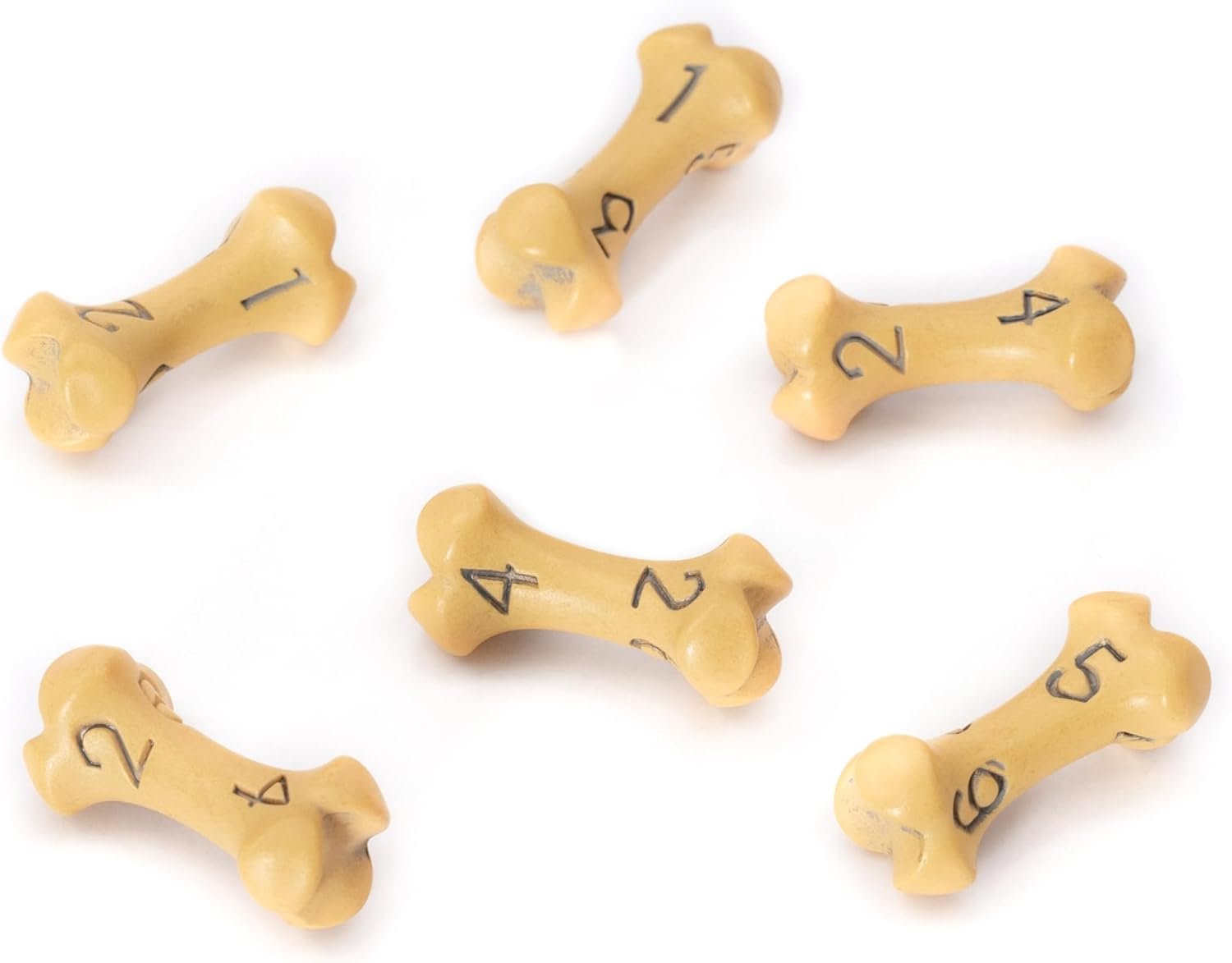
Luxury Bone Replica Dice (Ancient Style)
Buy on AmazonEarly Advances in the History of Dice
The transition from naturally occurring bones to crafted objects marked a significant step in the evolution of dice. Archaeological sites have revealed manufactured polyhedral dice dating back to at least the third millennium BC. Two bone dice, resembling modern six-sided dice, were discovered in the Neolithic settlement of Skara Brae in the Orkney Islands of Scotland. These dice, used between 3100 and 2400 BC, demonstrate a clear effort to create more uniform and predictable gaming tools. Key Talking Points: The oldest manufactured dice date back to at least the third millennium BC. Many ancient dice feature pips (dots) instead of numerals, reflecting a time before the widespread adoption of numerical systems. Dice have been found throughout the Roman Empire, though many were asymmetrical, reflecting a belief that fate, rather than strict probability, governed the outcome of a roll.…

Metal Dice Set (Premium)
Buy on AmazonThe Evolution of Polyhedral Dice in Dice History
Another major chapter in the history of dice is the creation and use of multi-sided polyhedral dice, which expanded possibilities for gaming and divination…
Ancient Polyhedral Dice Designs
The Royal Game of Ur, a strategy board game popular in ancient Mesopotamia, dating back to around 2500 BC, featured four-sided dice shaped like pyramids. In Egypt, a 20-sided die dating to the late first millennium BC, engraved with Greek letters, was discovered, its purpose still debated by historians. Perhaps the oldest 12-sided die is a rock crystal artifact reportedly found in the Greek city of Patras, dating to around 50 AD. While the evidence for this particular die is anecdotal, it highlights the diversity of dice designs in the ancient world. Other examples include a 14-sided die from the Waring States period of China (475-221 BC) and an 18-sided die found in the tomb of a Chinese noblewoman who died around 100 BC. Key Talking Points: Ancient civilizations experimented with a wide variety of polyhedral dice, including 4-sided pyramids, 12-sided rock crystals, and 20-sided dice with Greek letters. These dice were used in board games, divination, and other activities. The diversity of ancient dice designs reflects the ingenuity and creativity of early game designers.
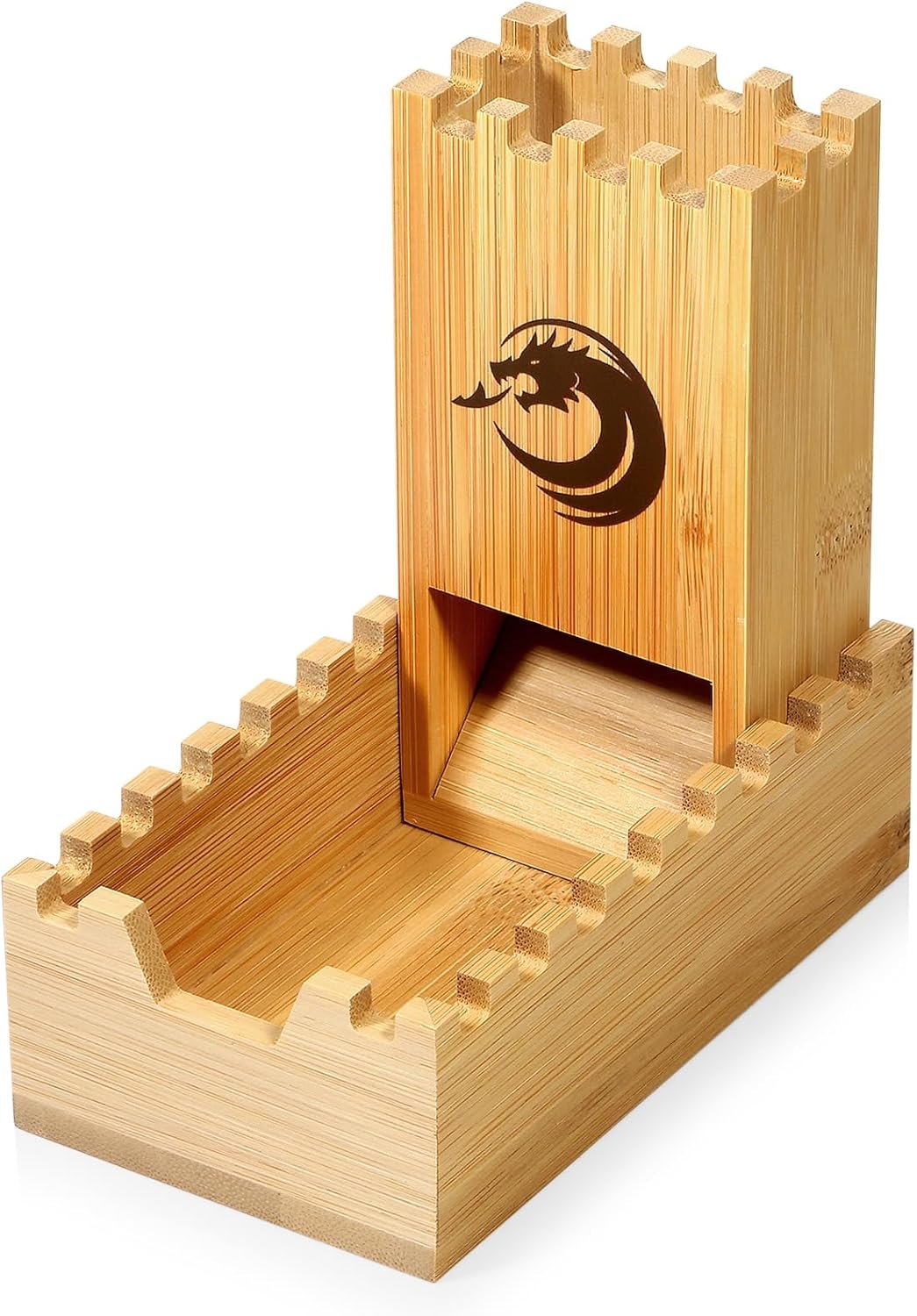
Dice Tower (Fair Rolling Accessory)
Buy on AmazonModern Renaissance in the History of Dice
The modern history of dice took off in the mid-20th century with new patents and commercial dice production. In the 1950s, Mr. Yushi Ishida of the Tokyo Shiba Ura Electric Company patented a 20-sided die with the numbers 0 through 9 printed on them twice. These dice were distributed by the Japanese Standards Association for demonstrating the principles of statistical quality control. In 1963, Fredda Sydney Sieve created the game “Zazz,” which featured a complete set of polyhedral dice, including a four-sided, six-sided, eight-sided, twelve-sided, and twenty-sided die. Sieve was a fascinating figure, an inventor and entrepreneur who also happened to be a concert pianist. Key Talking Points: The modern 20-sided die emerged in the 1950s, initially used for statistical quality control. Fredda Sieve’s “Zazz” game (1963) was a significant step in popularizing polyhedral dice. The US Naval War College also used dice with the numbers 0-9 for war gaming simulations.
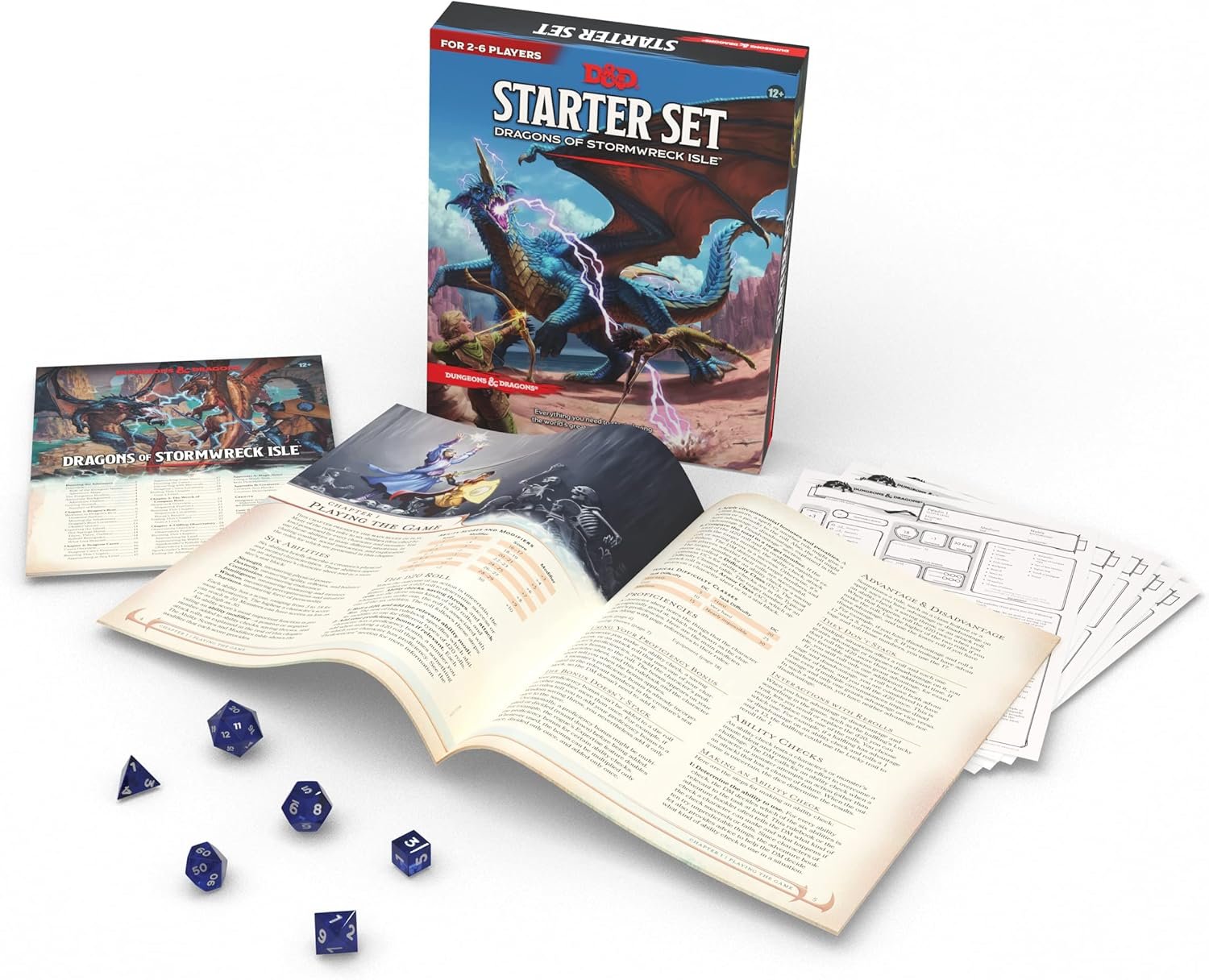
D&D Starter Set (5th Edition)
Buy on AmazonThe D&D Revolution in Dice History
The widespread adoption of polyhedral dice is closely tied to the history of Dungeons & Dragons.
Introduction to Role-Playing Games and Dice
While Gary Gygax is often credited as the sole creator of D&D, the game’s evolution also contributed greatly to the ongoing history of dice. However, it may have been another early D&D player, Dave Wesley, who introduced polyhedral dice to the game. In 1971, Arneson ran the first fantasy role-playing game, Blackmore, which was based on Wesley’s historical Braunstein campaigns. According to Greg Svenson, a player in that game, Wesley found a set of polyhedral dice in an educational supply catalog and showed them to Gygax, who adopted them for D&D. While the exact details of this event are debated, the impact is undeniable. Key Talking Points: Dave Wesley may have been the one who introduced polyhedral dice to Gary Gygax and D&D. Early D&D games initially used six-sided dice before adopting the full range of polyhedral dice. The adoption of polyhedral dice revolutionized the way tabletop role-playing games were played.
Modern Innovations in Dice Design
The history of dice continues to evolve with innovations like percentile dice, specialized D30s, D100s, and new materials. In 1980, Game Science invented the 10-sided die, allowing players to easily generate numbers from 1 to 100. A decade later, Game Science introduced a 10-sided die with multiples of 10, eliminating the need to use two different-looking dice for percentile rolls. Since then, we’ve seen the mass production of specialized dice like D30s, D100s, and even D48s and D120s. These dice cater to the needs of specific games and players, pushing the boundaries of what’s possible with random number generation. Key Talking Points: Game Science invented the 10-sided die in 1980, simplifying percentile rolls. Specialized dice like D30s and D100s have become increasingly popular. The ongoing innovation in dice design reflects the evolving needs of the gaming community.
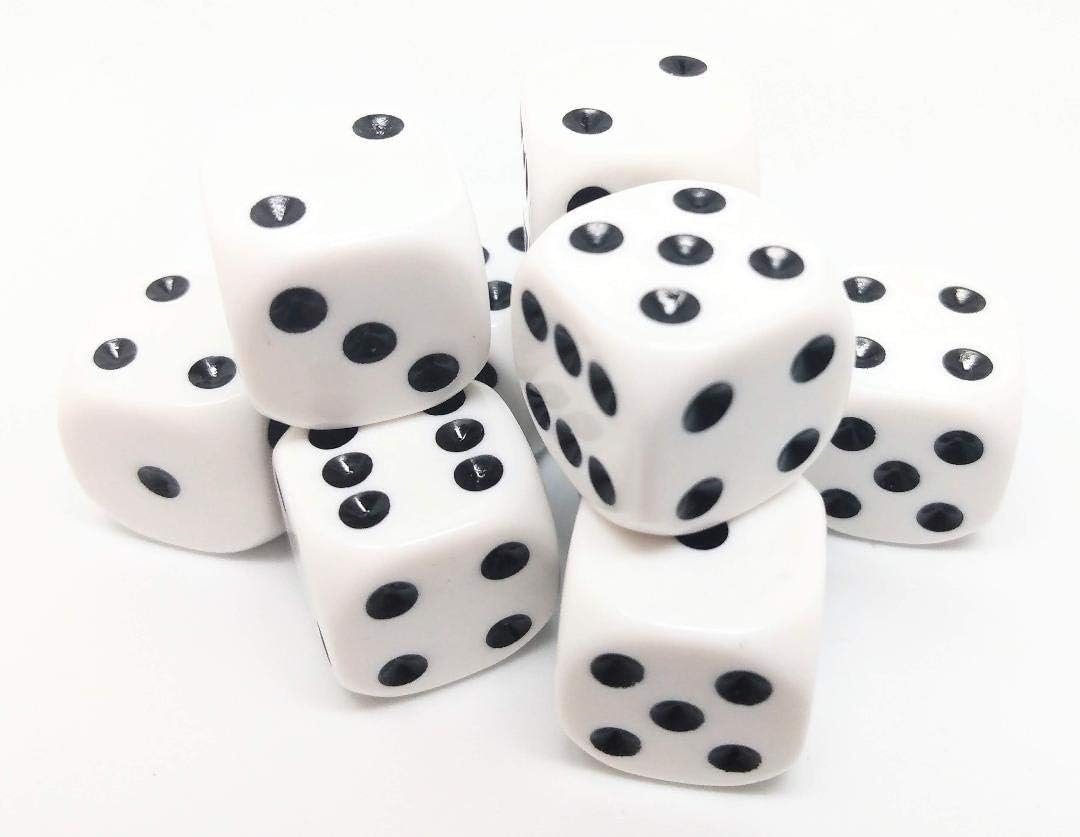
Ultimate 16mm White Dice Set
Buy on AmazonCultural Impact and the Legacy of Dice
Dice have had a profound impact not only on gaming but also on technology, mathematics, and culture.
Gaming Applications Across History
From ancient gambling to TTRPGs to casino craps, the history of dice shows their enduring appeal. Dice are an integral part of modern tabletop gaming, providing a source of randomness and excitement. They’re also used in video games, where digital dice rolls determine outcomes and drive gameplay. Even the professional gambling industry relies on dice for games like craps. Key Talking Points: Dice are used in a wide range of gaming applications, from tabletop RPGs to video games to casino games. They provide a crucial element of chance and unpredictability. Dice have become a symbol of gaming culture.
The Future of Dice Technology
The next phase in the history of dice will likely see digital and quantum enhancements. We may see more sophisticated dice with built-in sensors and displays, or even virtual dice that can be rolled on a screen. Manufacturing advances will continue to improve the precision and balance of dice, ensuring fair and accurate results. Quantum Dice, for example, are developing quantum random number generators (QRNGs) that leverage quantum entropy measurement protocols, providing stronger assurance of unpredictability and fairness. 3D printing has also become increasingly prevalent for custom dice production. Key Talking Points: The future of dice may involve greater integration with digital technology. Manufacturing advances will continue to improve the precision and balance of dice. New technologies like quantum random number generators could revolutionize the way we generate randomness.
Conclusion: Dice Through History and Beyond
From their humble beginnings as animal bones to today’s precision-engineered polyhedrals, the history of dice reflects humanity’s fascination with randomness, fate, and gaming. They’ve been used for divination, entertainment, and even statistical analysis. Today, they remain a beloved tool for gamers around the world, shaping narratives and determining fates with every roll. As technology continues to evolve, the future of dice is uncertain. But one thing is clear: the human fascination with chance and randomness will ensure that dice continue to play a role in our lives for centuries to come. So, whether you’re a seasoned gamer or a curious observer, take a moment to appreciate the rich history and enduring legacy of these small but mighty objects. Now, go forth and roll for initiative!
